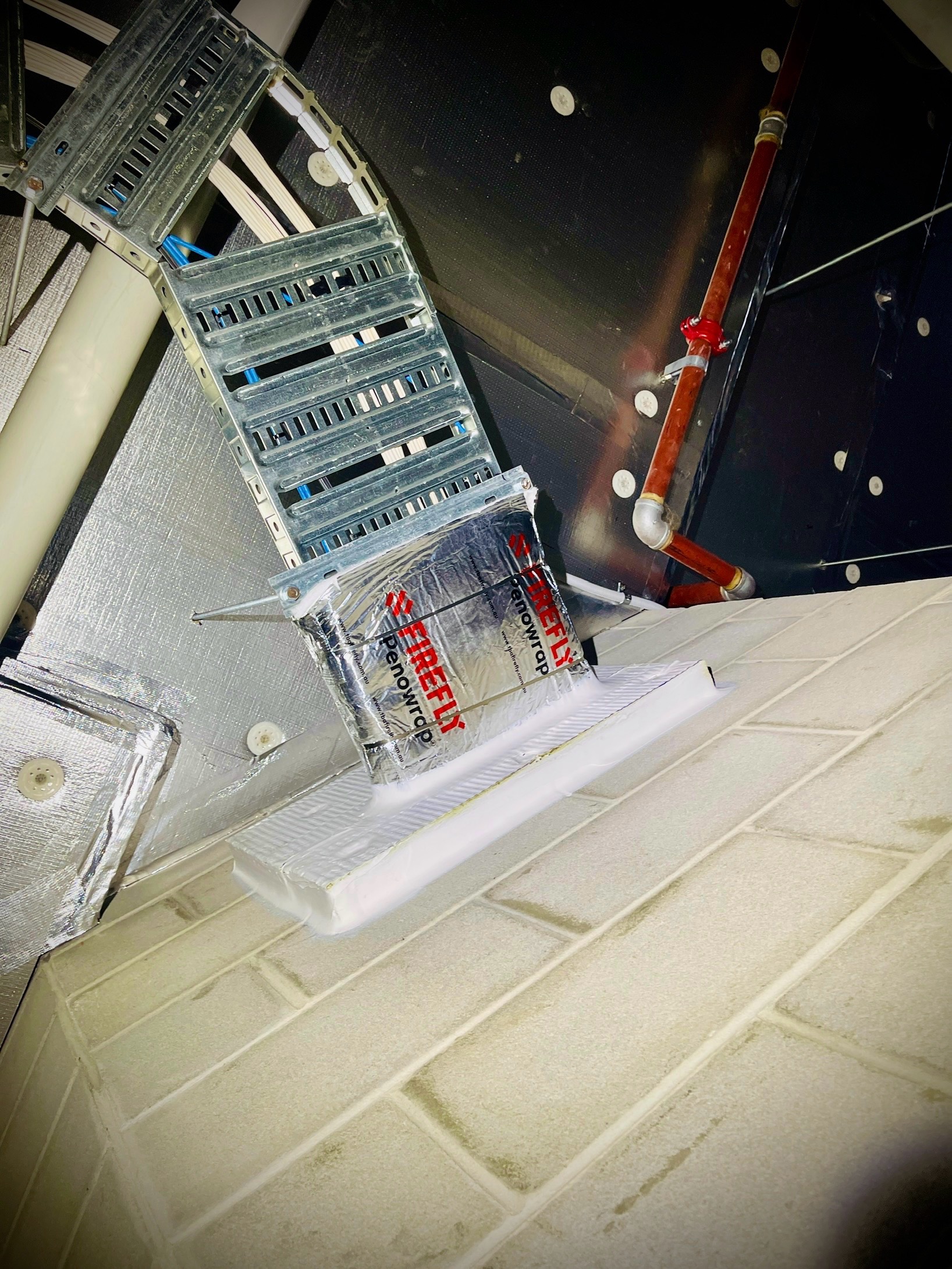Passive Fire Protection: Ensuring Safety Through Design
Passive fire protection is a critical aspect of building design that helps prevent the spread of fire, smoke, and toxic gases, safeguarding both people and property. Unlike active fire protection systems, such as sprinklers and alarms, passive fire measures are integrated into the structure itself, providing long-term, reliable safety.
Key elements of passive fire protection include fire-resistant walls, floors, doors, windows, and firestopping materials that compartmentalise and contain a fire, allowing occupants to evacuate safely and enabling firefighters to control the blaze. Complying with Australian fire safety standards, such as the National Construction Code (NCC), is essential for ensuring that buildings are built to withstand potential fire risks.
At Flashover Fire Rating, we specialise in providing expert solutions for passive fire protection, offering everything from fire-rated construction materials to comprehensive fire safety assessments. With our deep understanding of regulations and cutting-edge technologies, we help architects, builders, fire engineers and developers create safer, more resilient buildings that meet the highest safety standards.

Passive Fire Protection Requirements in Australia
In Australia, passive fire protection is a vital component of building safety, designed to limit the spread of fire, smoke, and heat through the strategic use of fire-resistant materials and construction techniques. These requirements are governed by the National Construction Code (NCC), which sets out specific standards to ensure that buildings are safe for occupants in the event of a fire.
Key requirements for passive fire protection in Australia include:
Adhering to these regulations not only ensures compliance with legal and safety standards but also significantly reduces the risk of fire-related injuries and property damage. At Flashover Fire Rating, we offer expert advice and solutions to help builders, developers, and property owners meet these essential passive fire protection requirements, delivering peace of mind and safer buildings.
What Passive Fire Systems Do
Passive fire systems are crucial for building safety, designed to prevent the spread of fire, smoke, and heat through a building's structure. Unlike active fire systems, such as sprinklers or alarms, passive fire systems work automatically without requiring human intervention, providing continuous protection by containing a fire to its origin and allowing safe evacuation.
These systems focus on the design and construction elements of a building, using materials and methods that slow or prevent the spread of fire and smoke. Key components of passive fire systems include:
By slowing the spread of fire and providing safe evacuation routes, passive fire systems are a fundamental part of building design, helping to save lives, reduce damage, and provide valuable time for emergency services to respond. In Australia, compliance with the National Construction Code (NCC) and Australian Standards ensures these systems meet stringent safety and performance requirements. At Flashover Fire Rating, we provide expert solutions to help builders, architects, and developers integrate passive fire protection into every project, ensuring a safer built environment.
Inspecting to AS 1851-2015: Ensuring Compliance and Safety
In Australia, regular inspections and maintenance of fire protection systems are critical to ensuring they perform effectively in the event of an emergency. The AS 1851-2015 standard outlines the requirements for routine service and maintenance of fire protection systems and equipment, helping building owners and managers stay compliant with Australian fire safety regulations.
The process of inspecting to AS 1851-2015 involves:
By following the rigorous requirements of AS 1851, building owners and managers can ensure that their fire protection systems remain fully operational, compliant with Australian standards, and, most importantly, capable of protecting lives and property in the event of a fire. At Flashover Fire Rating, we provide expert inspection and maintenance services to help you meet these critical safety standards.
Our expert teams specialise in supplying comprehensive support across a full range of Active Fire Systems, ensuring you have peace of mind that your people and property is protected.We commit to simplify and communicate the complex nature of the safety compliance industry, supporting and delivering high quality service that ensures your building maintains compliance.
With a diversely trained team, we effectively provide a comprehensive suite of ESM solutions from detection and alarm systems, through to fire pumpsets and tanks. Our goal is to partner with you to deliver on our promise of supporting you, ensuring you have peace of mind that your people and property are protected.